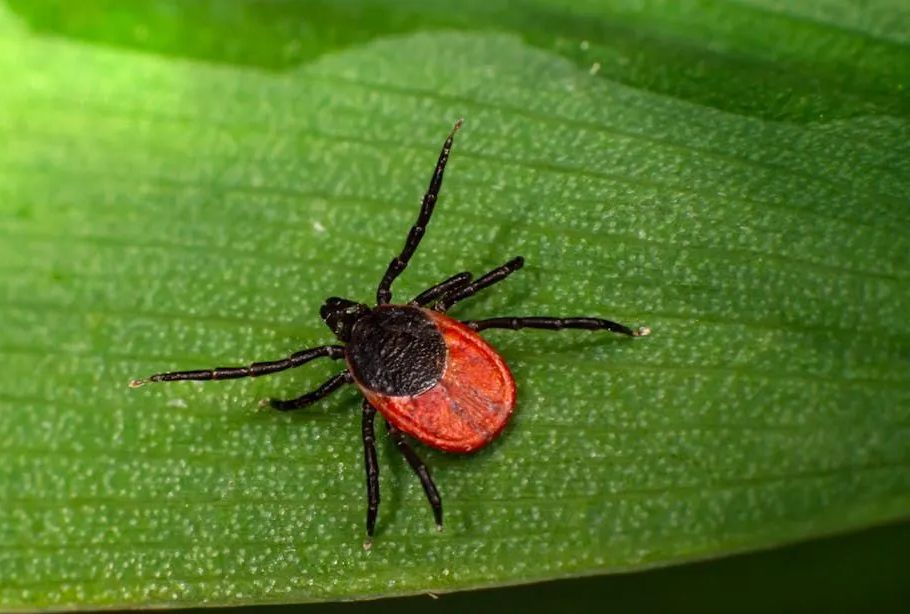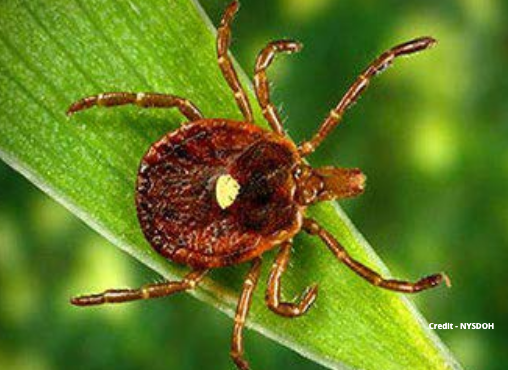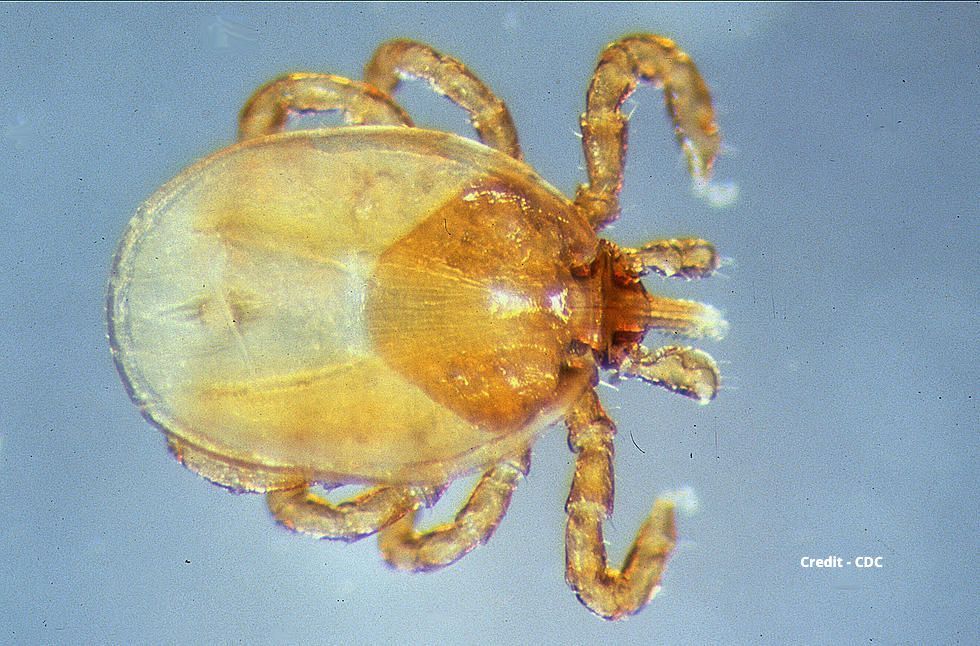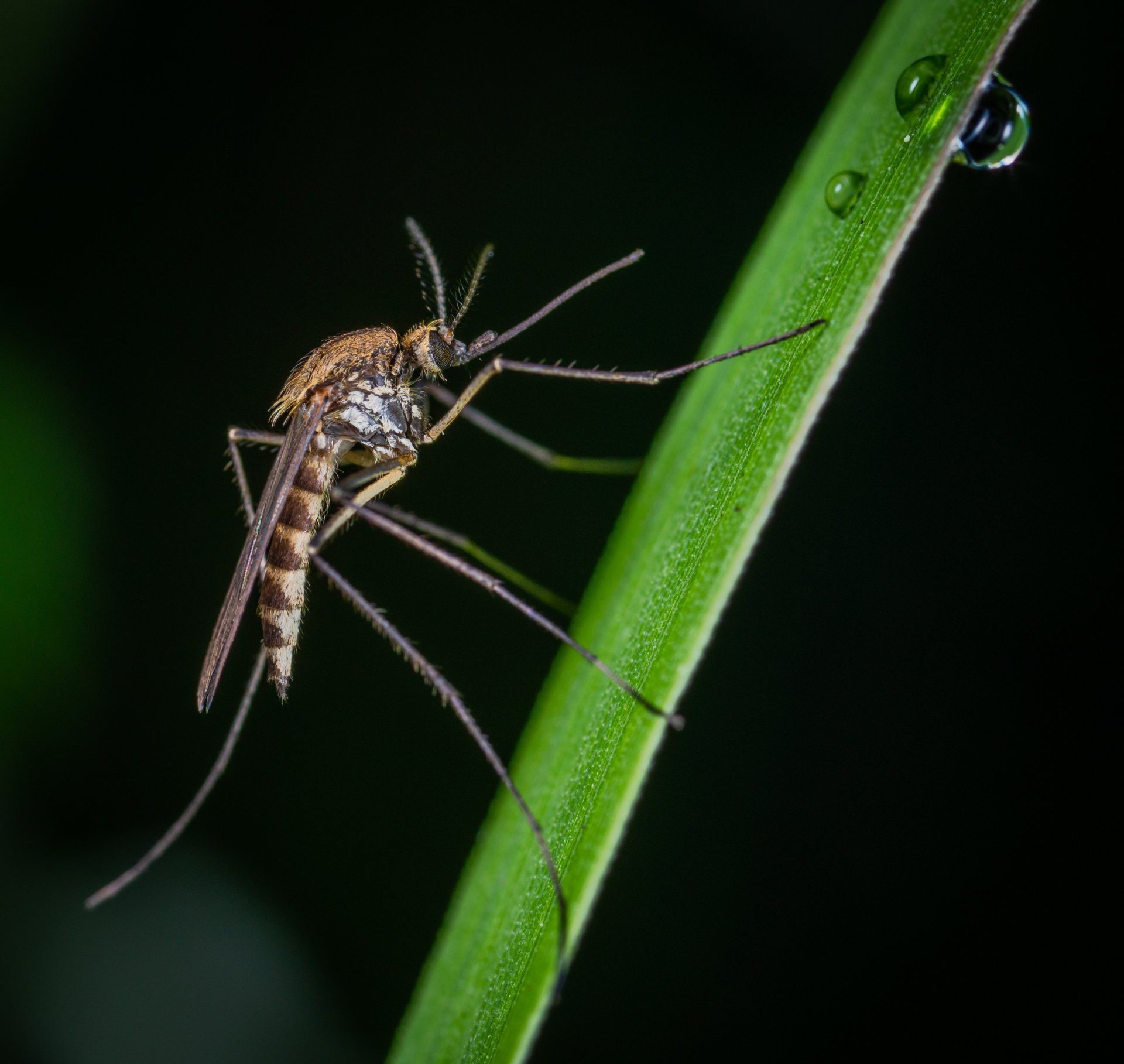In New York State, there are 30 known species of ticks. 10 of these species are known to bite humans and pets. According to the New York State Department of Health (NYSDOH), 4 species have been identified as the riskiest in their potential in transmitting diseases. Prevalent seasons for encounters with these blood-suckers are spring, summer, and fall. However, adult vectors can be active whenever temperatures rise above freezing in winter. Although they can bite at any age, the younger ones (nymphs) and adult females are usually the ones found on humans and animals.
Don't let them get you ticked off! Leave the worry to Adirondack Mosquito Control. We are fully equipped and ready to address and offer remedies to any tick-related issues you may encounter!
Black Legged (aka Deer)Tick (Ixodes scapularis). Predominantly found in the Eastern half of the United States, they carry germs that can cause diseases like Lyme disease, Granulocytic anaplasmosis (HGA), relapsing fever, Ehrlichiosis, Babesiosis, and Powassan virus (Encephalitis).
Spanning through three stages in its life cycle, each stage is reliant on three separate hosts: larva, nymph, and adult. Following a two-year life cycle, starting in spring when an adult female lays many eggs in decaying organic material (i.e. leaves). By early summer, tiny six-legged larvae hatch from the eggs and begin feeding on their first host, usually a rodent. Many of these hosts, like mice and chipmunks, already carry the Lyme disease-causing bacteria, which they pass on to the larvae. After shedding the larval exoskeleton, nymphs mainly feed on small to medium-sized animals, while adult ticks prefer deer. It's essential to note that all stages of these ticks can also bite humans and domestic animals. Lyme disease is the most often diagnosed tick-borne illness.
Found in wooded and grassy areas, particularly in areas with dense vegetation and a high population of their preferred hosts, such as deer and rodents. They can also inhabit areas with leaf litter and shrubs, creating suitable habitats for them to thrive.

American Dog Tick (Dermacentor variabilis, D. similis). Identified in areas east of the Rockies, although less common, have been detected in Northern New York. Illnesses that they can transmit include Francisella tularensis (tularemia) and Rickettsia rickettsii (Rocky Mountain spotted fever).
These critters are fairly resilient to dehydration, therefore can be discovered in dry environments such as open meadows and yards, as well as wooded areas. Unlike the others mentioned here, adults are typically most active from April to August, with their peak activity occurring during May and June. However, by October and November, they are no longer active.

Lone Star Tick (Amblyomma americanum). Their presence is dominant in the Eastern half of the United States. They are known for potentially spreading Human Monocytic Ehrlichiosis (HME), Tularemia
Notorious as aggressive biters, their wrath can result in alpha-gal syndrome, linked to a meat allergy. As the blood-sucker feeds, it passes a sugar molecule named alpha-gal into the body. For certain individuals, this molecule prompts an immune system response, leading to allergic reactions to specific animal proteins like beef, pork, or lamb, while sparing poultry or fish. Additionally, it might trigger responses to other mammal-derived foods like dairy products or gelatins.

Woodchuck (aka Groundhog) Tick (Ixodes Cookei).
They can be found in habitats spanning east of the Rocky Mountains. Their germ carrying capabilities can result in the transfer of Powassan virus (Encephalitis).
All life stages of this tick feed on a variety of warm-blooded animals, including groundhogs, skunks, raccoons, squirrels, weasels, foxes, and from time to time humans and domestic animals. Additionally, these vectors are commonly discovered within the vicinity of their hosts' dens and nests. The capacity of woodchuck parasites to endure prolonged periods without a host to feed on sustains their survival for a year or even longer!

Important Tips on Prevention:
- Opt for light-colored clothing and wear long-sleeved shirts and pants tucked into light-colored socks. This makes it easier to spot them before they reach your skin.
- Use repellents on your clothing, camping gear, and skin, following the directions on each product. Common repellents include DEET, permethrin, oil of lemon eucalyptus (OLE), and picaridin. Be cautious with products not suitable for skin or clothing, especially for children under 3 years old.
- Thoroughly do a whole body check immediately upon returning indoors. Shower or bathe and inspect areas like the hairline, ears, underarms, groin, and behind the knees. Also, check the waistband of pants and sock cuffs.
- Treat your pets against these vectors regularly. Check outdoor pets regularly.
- Wash clothes in hot water and dry them on a high heat setting.
- If you find a tick, don't panic! Remove it carefully with tweezers or a specialized removal tool, avoiding methods like burning or applying substances. Apply steady and even pressure to pull the tick straight out. Avoid twisting or jerking motions, as these can cause the mouthparts to break off and remain embedded in the skin. Clean the area with soap and water or rubbing alcohol.
Consider taking a picture or safely preserving it (by placing in a pill bottle or zip lock bag with rubbing alcohol) for identification by healthcare professionals, which can aid in diagnosis if you develop symptoms..
Live Life Bite-Free!
Contact Us Today!
Contact Form Page
Disclaimer: The information above is for general awareness and does not substitute professional medical advice or treatment. Your health conditions are unique and may require specific care. Always consult a healthcare professional for accurate diagnosis and treatment.
